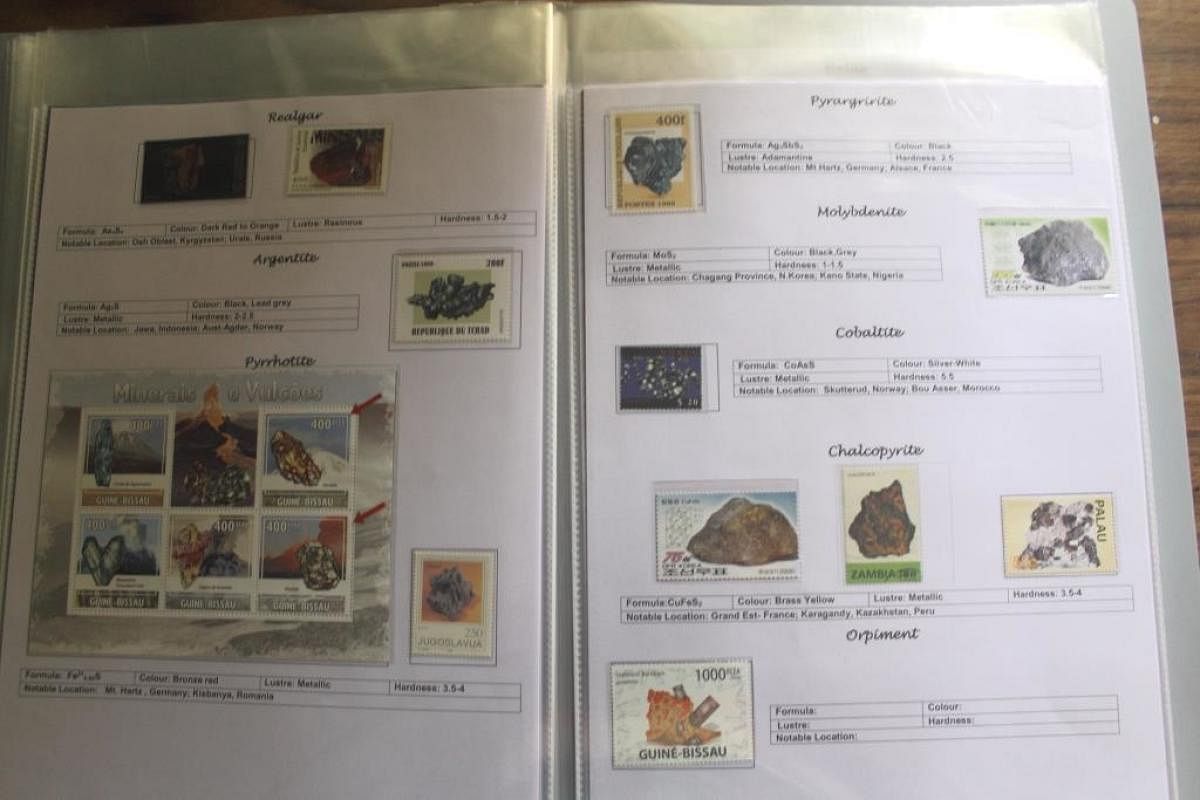
For Adesh Barde of Belagavi, collecting stamps is more than just a hobby. Mining from his collection, he enthusiastically shows some stamps of the Colony of Gold Coast (now Ghana), a first day cover from Australia issued in 1973 and first day cover of Deuchtshe of 1968, which are quite rare. He also flirts with his favourite limited edition of maxi cards with minerals which he managed to get through a friend with a lot of effort. But, what makes his collection stand out is the unique themes — rocks, minerals, mining, geologists and other geological features.
Adesh toyed with stamps when he visited some philately exhibitions as a college student. Good frames instantly gripped his attention and with no second thought, he decided to have a unique collection of his own. Being a student of geology in graduation, he took to collecting stamps related to geology. Today, after around 25 years, Adesh has a collection of around 600 stamps from 110 countries.
Describing his collection as a ‘treasure of planet earth’, he says collecting thematic stamps was tough back then as the internet was less popular and a lot of effort and money had to be pumped in to get every single stamp. Also, getting stamps needed subject-related research on countries and earth sciences. But then patience pays and slowly his treasure became rich.
“Philately may seem a waste of time, energy and money. But, it teaches a lot about our past and present. As we get in touch with people from across the world through various means, it nourishes healthy relationships.
My friends helped me a lot to get a few stamps and this made our bond stronger. Despite their small size, stamps tell us so much about history, geography, anthropology, and even get down to details like traditional mining methods and the most commonly used minerals across the world. It is ultimately a knowledge building exercise,” he says.
Adesh has classified his stamps based on rocks — ingenious, sedimentary and metamorphic. And, he has also classified the stamps with minerals according to chemical compositions, mining and famous geologists. He has a mix of definitive types of stamps in shapes like triangle, diamond and square. A value-addition to his stamps is the detailed description he gives regarding the stamps and also the geological importance and processes attached to them.
He has stamps on volcanoes from Solomon islands and meteorites from Guinea-Bissau. Also, there are stamps featuring precious mineral types like the amber, vanadinite, adamite, pyromorphite, turquoise, monazite, erythrite, variscite, calcite, dolomite, gypsum, chromite, uraninite, hematite and others issued by USA, Pakistan, New Zealand and other countries.
Most of the stamps, postal covers, postcards, special covers, cancellation marks and envelopes with designs on the earth sciences are rolled out by African countries like Nigeria, Mozambique, South Africa, Kenya, Namibia, Zaire, Tanzania, Omonia, Rwanda and Somalia as they are rich in natural resources. However, India has also issued a few and they find a special place in Adesh’s collection.
He also has stamps and special covers on cavansite, Rourkela steel plant and NALCO (National Aluminium Company), the limestone caves of Meghalaya, the commemorative stamp on the 12th World Mining Congress in New Delhi in 1984 which shows a miner drilling and the one issued to mark the centenary year of Kolar Gold Field (KGF).
Furthermore, his stamp series also portray geologists like Otto Wilhelm Hermann von Abich, Waldemar Brogger, George Frederick Kunz, James Dwight Dana, William Niven, Max Von Laue, Ignacy Demeyko and a special one depicting proustite with a picture on Nelson Mandela on it.
Presently, Adesh has around 70% of stamps issued by various countries on rocks and minerals and has begun training his son to pursue the hobby as the charm in it is the perpetuity. He says that philately is not waning and is actually in a stage of metamorphosis as newer means of obtaining stamps like online philately clubs, philately blogs and social media have come up.